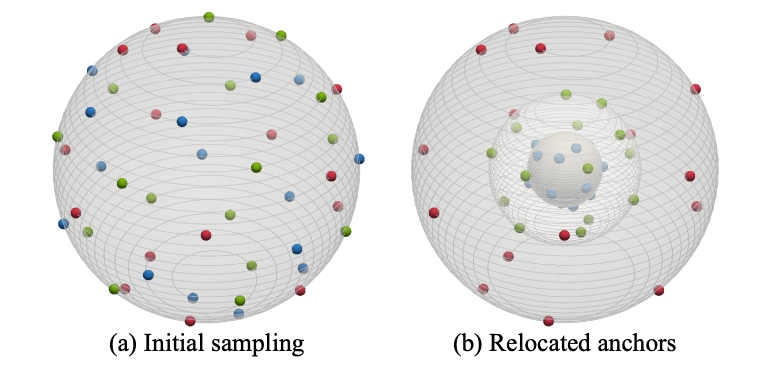We introduce anchored radial observations (ARO), a novel shape encoding for learning implicit field representation of 3D shapes that is category-agnostic and generalizable amid significant shape variations.
The main idea behind our work is to reason about shapes through partial observations from a set of viewpoints, called anchors. We develop a general and unified shape representation by employing a fixed set of anchors, via Fibonacci sampling, and designing a coordinate-based deep neural network to predict the occupancy value of a query point in space. Differently from prior neural implicit models that use global shape feature, our shape encoder operates on contextual, query-specific features. To predict point occupancy, locally observed shape information from the perspective of the anchors surrounding the input query point are encoded and aggregated through an attention module, before implicit decoding is performed.
We demonstrate the quality and generality of our network, coined ARO-Net, on surface reconstruction from sparse point clouds, with tests on novel and unseen object categories, "one-shape" training, and comparisons to state-of-the-art neural and classical methods for reconstruction and tessellation.









